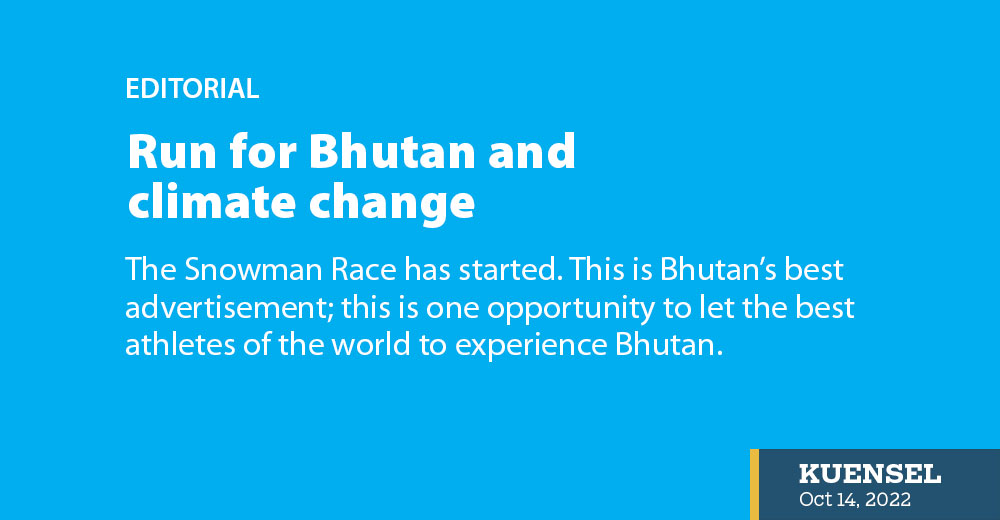The Snowman Race has started. This is Bhutan’s best advertisement; this is one opportunity to let the best athletes of the world to experience Bhutan.
The run is not easy. We have participants from almost all parts of the world, chosen among the best.
Twenty-nine runners set off from Gasa yesterday. We wish them all well.
In the kind of terrain the runners must pass, every arrangement has to be right. That, we are told, is being taken care of.
The whole idea is about climate change that is affecting countries like Bhutan. The Himalayas, known also as The Third Pole, is becoming increasingly volatile. It is Bhutan sending a message to the world that climate change is a serious issue.
For Bhutan, therefore, this is a huge project. Thankfully, our neighbours and the countries that understand the earth issues are coming together.
The many arms of the United Nations are our partners. We could have done a lot better together. But the race is on…the run must succeed.
As DDM’s chief Thinley Norb said, the world must understand the risk and the coping capacity of the nations and the people.
Risks are being assessed and response plans made in the country. This is a positive way forward.
For disaster management, creating awareness is critical as people are the first responders. We understood the issue in four cycles—mitigation, preparedness, response, and recovery.
For example, in the event of an earthquake, mitigation involves structural designs, policies, and governance. Preparedness and response cycles are the assessment of a disaster’s impact and identifying the roles of agencies to respond to the impacts. Recovery is the start of developmental activities. What have we done in this many areas?
DDM as an agency to oversee disaster issues in the country delivers coordination and facilitates services in disaster management and works towards helping government and stakeholders attain disaster resilience. This must be strengthened.
What must happen is activities and programs beyond awareness programmes on disaster reduction in corporate offices and non-structural measures at home.
The good news is that DDM is working with government agencies such as the Ministry of Works and Human Settlement, the National Centre for Hydrology and Meteorology, and the National Land Commission to develop a disaster risk management portal that will generate science and evidence-based hazard mapping.
For Bhutan, earthquakes are a number one risk. GLOF is the biggest threat, however.
The run is for Bhutan. The run is for the world.


